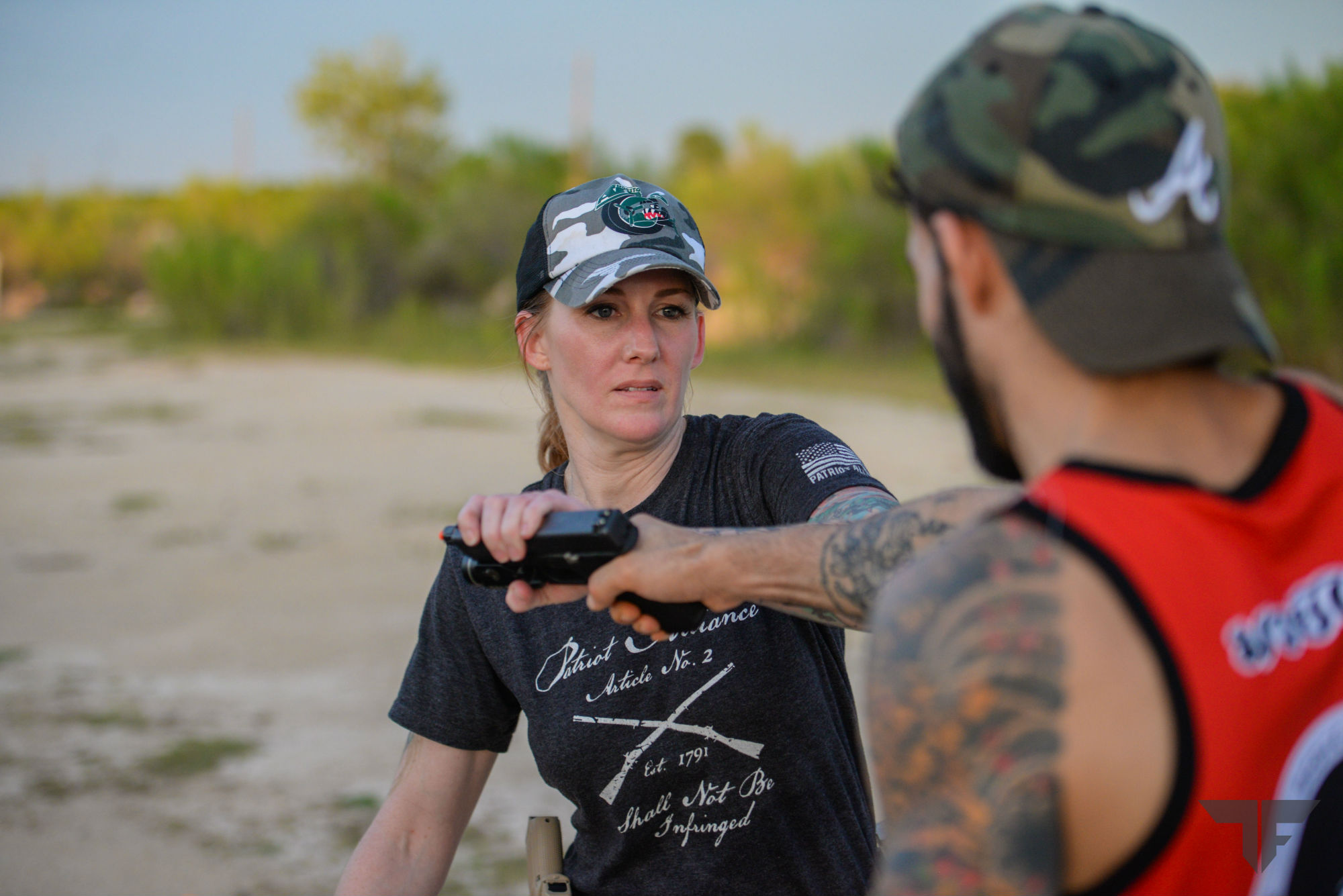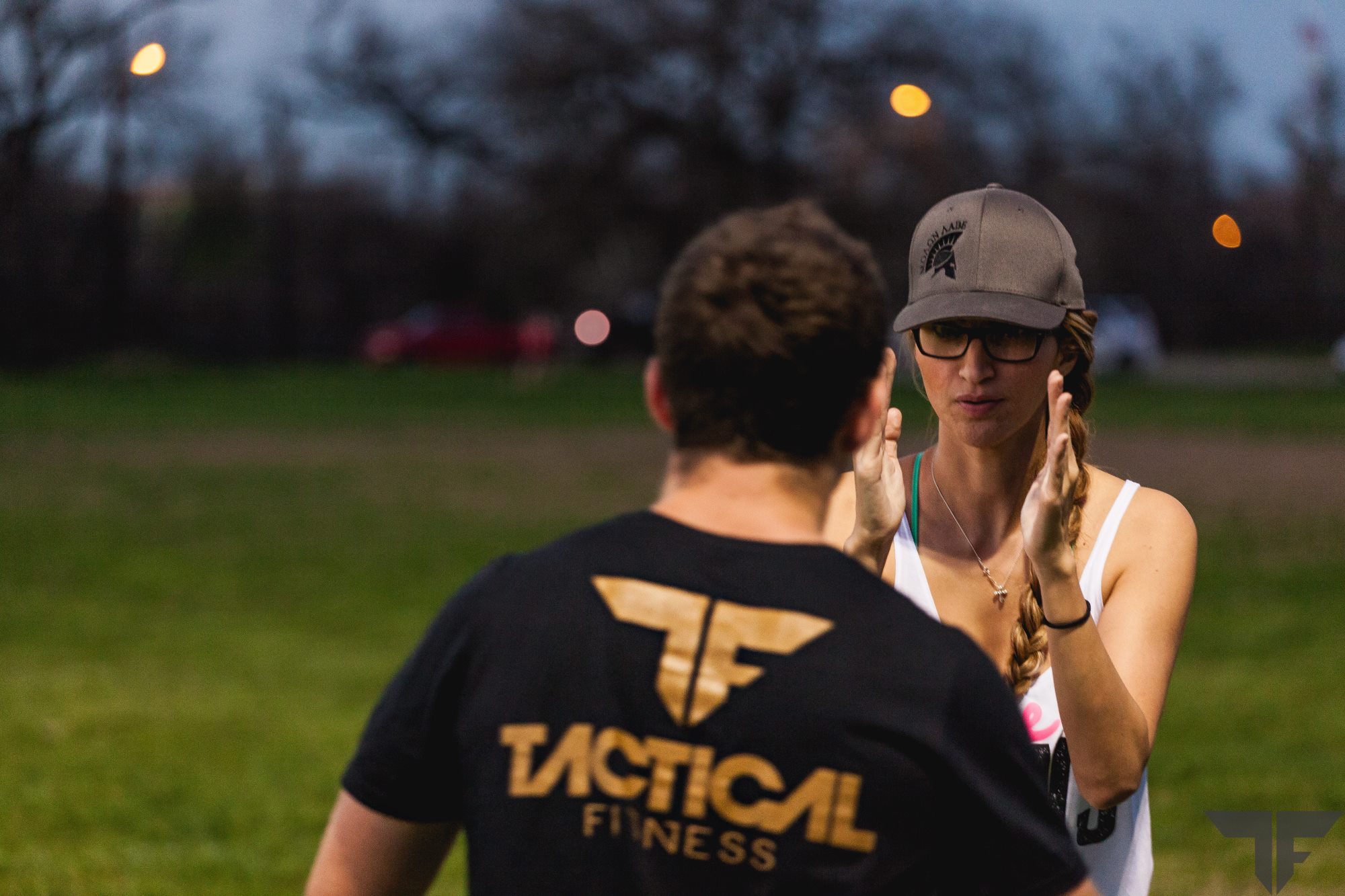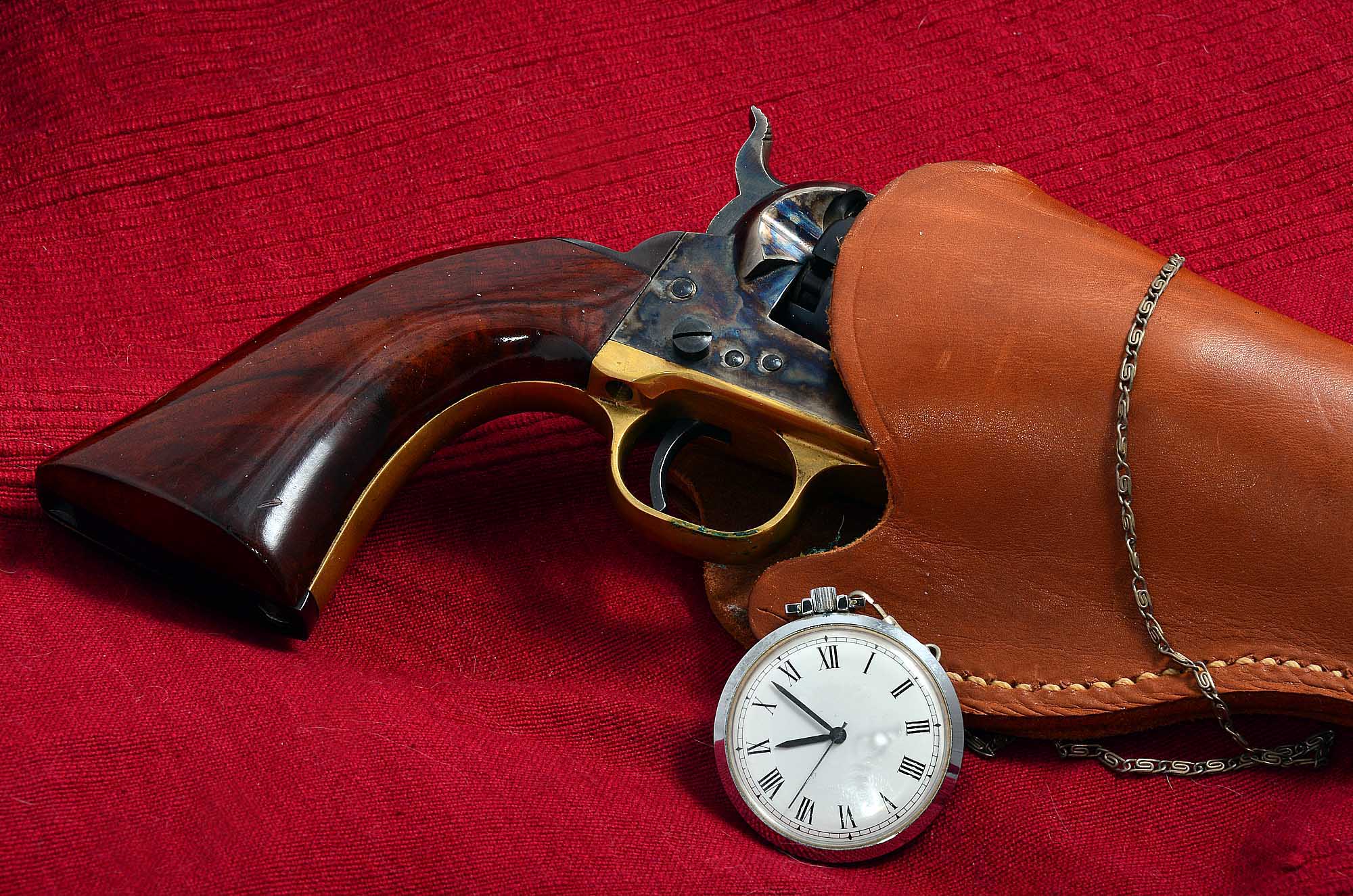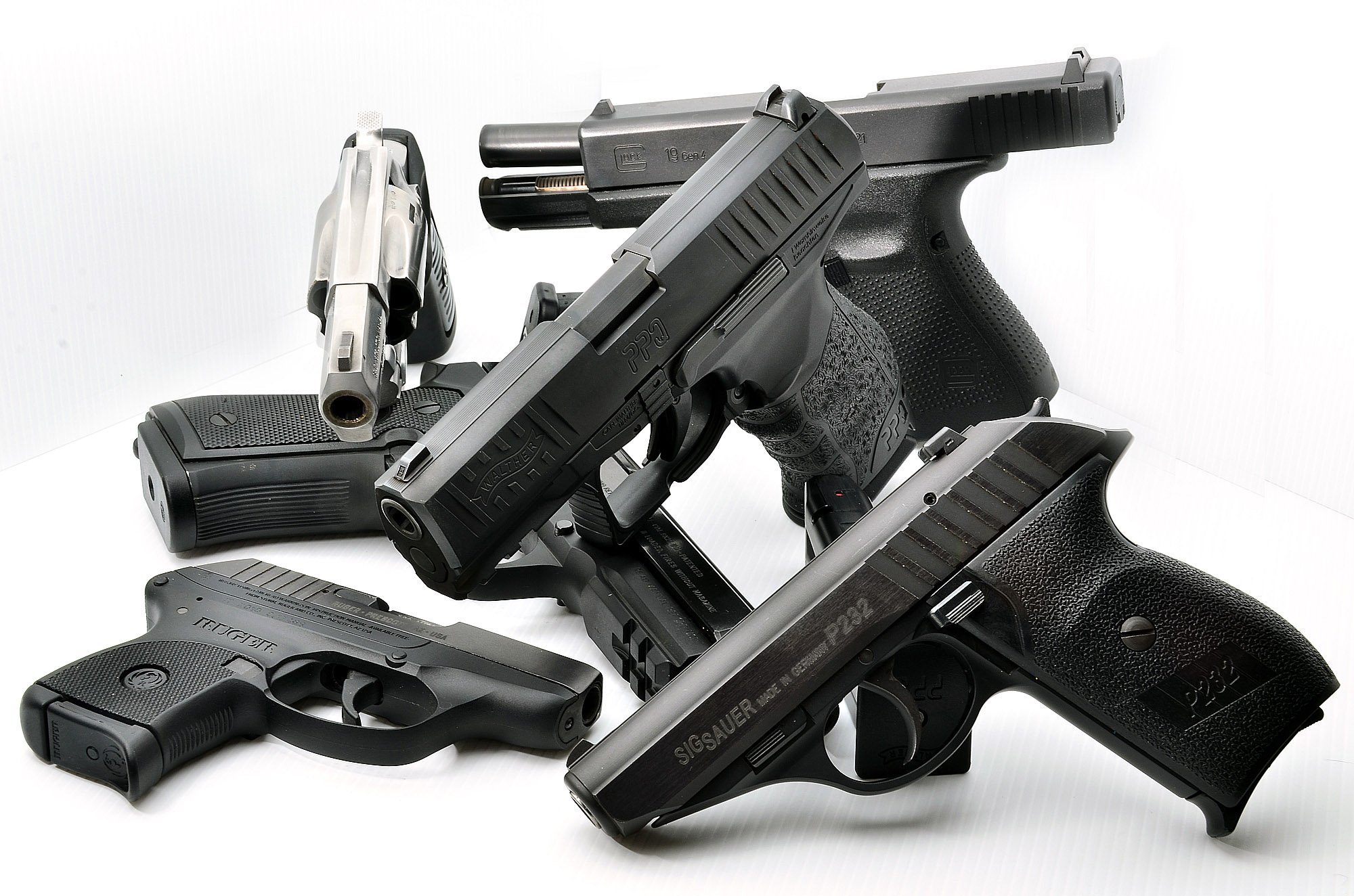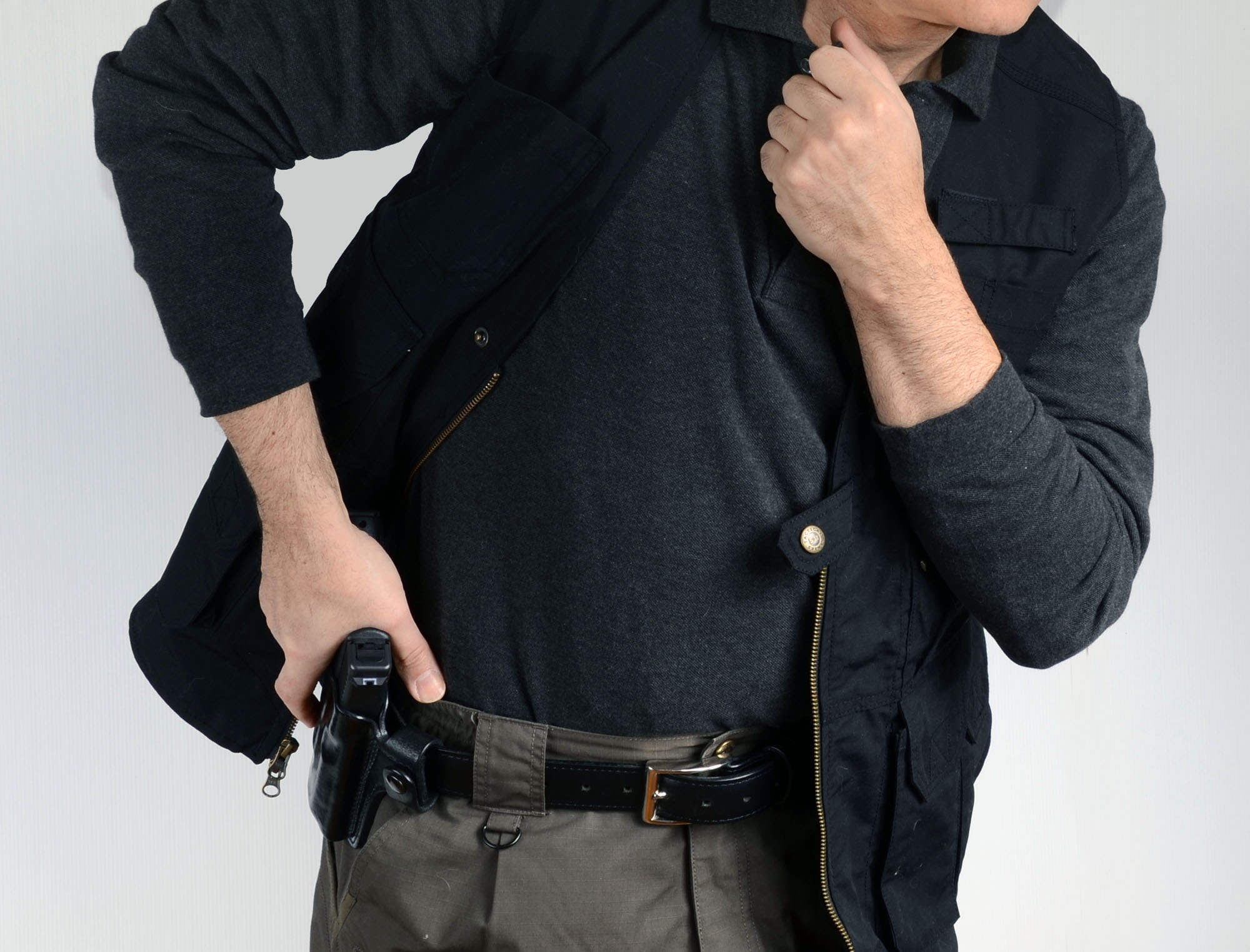The term “combat” to me has always been something that is related to all forms of combat, armed and unarmed. It followed me through my years of training in Krav Maga and my service in the IDF. What I noticed over the years, is that each form of combat had its stance, and a lot of the time that stance was similar between the different forms. As an instructor of both armed and unarmed (firearms) combat I have always tried to streamline the learning process for my students, so through many iterations I have consolidated the different stances into one “combat stance”.
Combat Stance: the basics
Let us first understand how the stance looks like:
- Feet are parallel and staggered (about shoulder width apart) with the toes pointed in the same direction. Non dominant foot forward (but can be switches according to the situation). As though we are standing inside a square.
- Feet are flat on the ground with the weight towards the ball of the feet. (the only exception is for hand-to-hand fighting where the back heel needs to be slightly off the ground to allow for hip rotation and bursting).
- Knees are slightly bent and pointed in the same direction of the feet.
- Hands are up by the face (extended for the pistol and rifle grip).
- Head comes slightly forward and chin comes slightly down.
- Note that quadriceps and core muscles should be slightly tense.
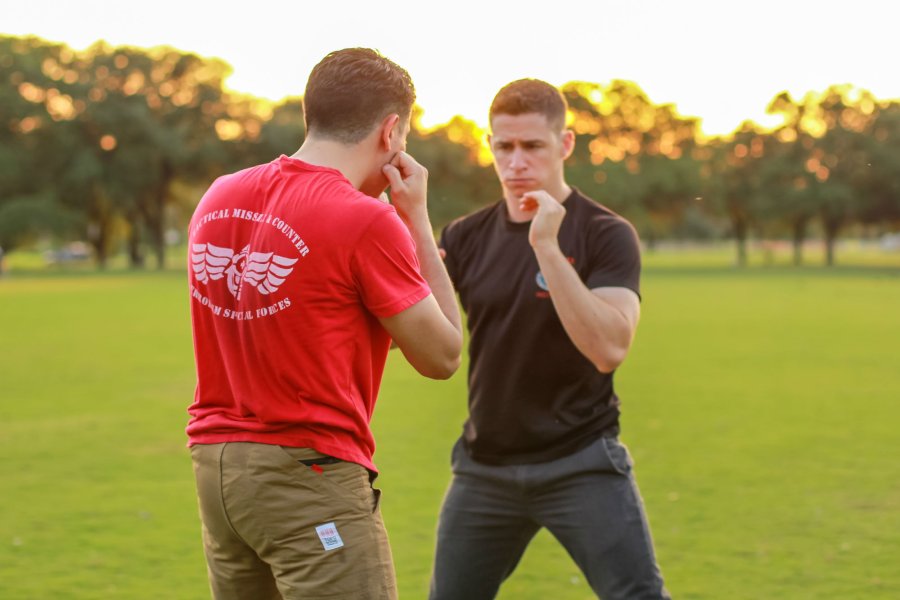
Stability and movement
Biomechanically speaking, this stance is ideal for stability and movement. Why?
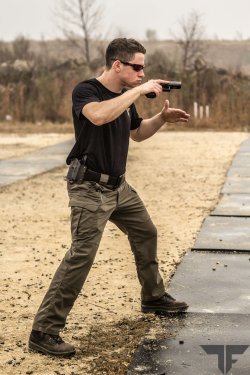
- The staggered stance “inside the square” creates a strong base which helps us maintain stability from the front, sides, and back.
- The foot positioning (flat on the ground) adds to the stability of the stance as well as helps maintain our weight into the fight/weight forward to absorb recoil.
- Bending the knees and keeping them pointed forward lowers our center of gravity as well as helps maintain a tighter joint capsule in our hip in turn stabilizing the hips to prevent movement. (try it out, squat in a normal position, feet and knees about 15 degrees out vs feet and knees parallel, see how the range of motion changes)
- Hands in front of the face help us hit our target quicker, defend, and drink weapon’s sights in front of our eyes.
- Lowering our head and chin once again helps protect it as well as keep our weight forward and into the fight (before the gun comes up - rifle and pistol) Additionally for shooting, this head position also helps us acquire the sights. Otherwise we would have to hold our firearm above our shoulder line which is extremely taxing on the deltoid and pectoralis muscles. (try it out, just hold your phone in your hands extend it away from the body and left it slightly above your shoulder line: how does it feel?).
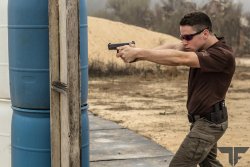
Although, the above is my personal take on the “Combat Stance” that has developed through years of training. There are many ways to modify and adapt this to different applications and combat conditions. This stance has come about in an effort to streamline the learning process for my students, especially those in the law enforcement, military, and private security communities, who have limited time to train and perfect individual techniques.
For more information please visit Tactical Fitness Austin website.
Read about night combat training and situational awareness on all4shooters.com.



